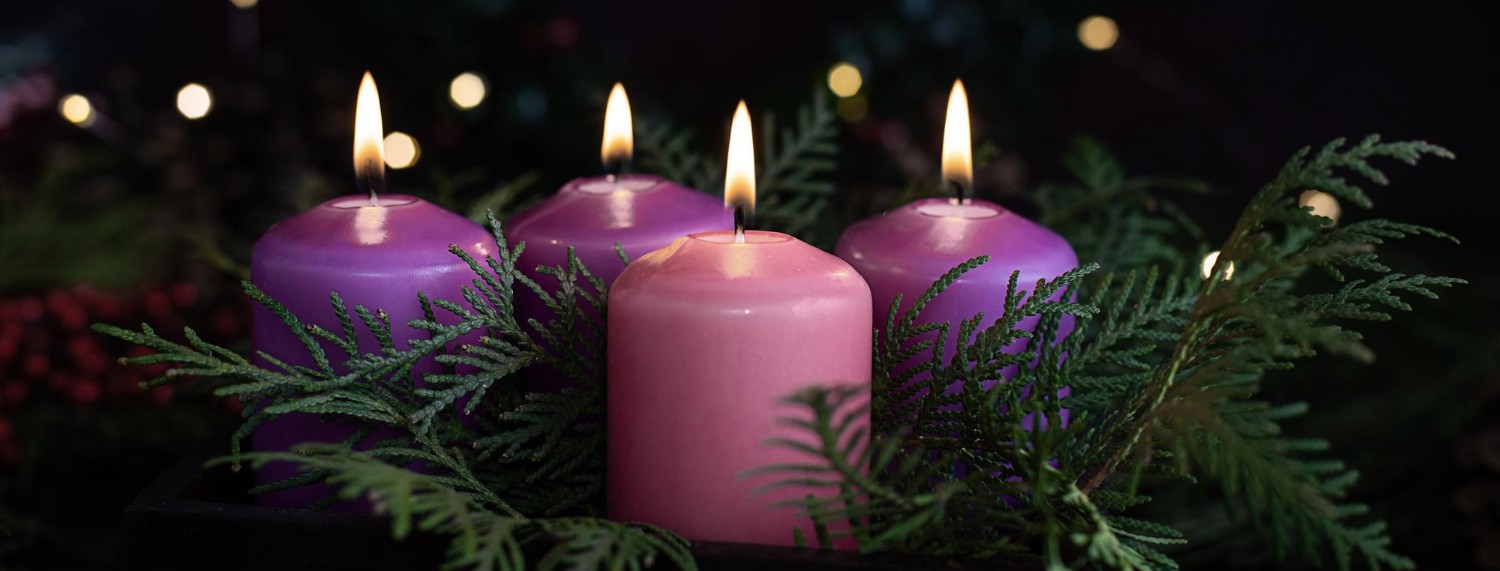The Season of Advent
National Liturgical Council

Advent has a twofold character: as a season to prepare for Christmas when Christ's first coming to us is remembered; as a season when that remembrance directs the mind and heart to await Christ's Second Coming at the end of time. Advent is thus a period for devout and joyful expectation. Advent begins with Evening Prayer I of the Sunday falling on or closest to 30 November and ends before Evening Prayer I of Christmas (GNLY 39, 40).
Advent always has four Sundays and starts on the Sunday after the Feast of Christ the King. Because of the close relationship between Easter and Christmas in celebrating the Paschal Mystery, the latter also became a secondary time for initiation. Thus an accompanying period of preparation became established which we know as Advent. There are some remnants of this parallel ‘Lent’ in the purple colour and the omission of the Gloria.
The major themes of Advent are summed up in the two Prefaces found in the Missal. The first one is used until December 16 when the second one takes over. The accent in the first period is that of watching in hope "that the salvation promised us will be ours when Christ our Lord will come again in his glory". It remembers the fulfilment of God’s plan of salvation in the first coming of Christ among us.
The second Preface highlights Mary, the virgin mother who "bore him in her womb with love beyond all telling". It names the role of John the Baptist who "was his herald and made him known when at last he came." It continues by naming our joy as we prepare to celebrate Christ’s birth "so that when he comes he may find us watching in prayer, our hearts filled with wonder and praise".
The music of Advent needs to reflect the yearning of our hearts as expressed by the Advent word – maranatha – come Lord Jesus. In the Liturgy of the Hours the ‘O’ antiphons provide a focus during the last days of Advent calling on God to come among us again.
The Sunday gospels of Advent each have their own theme:
The Lord’s coming at the end of time (First Sunday of Advent), John the Baptist (Second and Third Sunday), and the events that prepared immediately for the Lord’s birth (Fourth Sunday).
The Old Testament readings are prophecies about the Messiah and the Messianic age especially from Isaiah.
The readings from an apostle serve as exhortations and as proclamations, in keeping with the different themes of Advent (LM:I 93).
The weekday readings follow these general themes with the figure of John the Baptist coming into prominence in the second week.
The Advent wreath was originally a home custom stemming from Germanic countries. It has become a popular way of denoting the four weeks of Advent. "The progressive lighting of its four candles, Sunday after Sunday, until the solemnity of Christmas, is a recollection of the various stages of salvation history prior to Christ’s coming and a symbol of the prophetic light gradually illuminating the long night prior to the rising of the Sun of justice" (DPP 98). It is often lit during the introductory rites of the Mass and is usually accompanied with prayer or song.
The crib has been placed in Churches since antiquity. It is customary to leave a space for the figure of Jesus until Christmas, and the three kings or magi until the Feast of the Epiphany. In recent times parishes have added Christmas trees to their décor. These are sometimes used as a Jesse tree which entails the progressive placing of symbols of persons and events in the history of Jesus on the tree. These include figures such as Moses and David. As with any additions to the liturgy none of these should be placed in such a way as to detract from the major focal points of the celebration: the altar, the ambo and the chair.
Schools could well focus on the sense of expectation of Christ as light of the world rather than just the child in the manger. This builds up hope in the coming of Christ into the dark parts of our universe.
